Tomato is grown practically in every country of the world in outdoor fields, greenhouses, and net houses. The leading tomato producing countries in the world are China, India, USA, Turkey, Egypt, Iran, Italy, Spain, and Brazil.
It occupies an area of about 4.73 million hectares with a production of 163.96 million tonnes in the world (FAO, 2016). It is the world’s 3rd largest vegetable crop after potato and onion.
Tomato is the most widely cultivated crop in India. Tomato is a very important vegetable crop regarding both income and nutrition. Tomatoes are predominantly summer crops, but it can be cultivated throughout the year.
In its fruit contain vitamins like ‘A’ and ‘C’ and antioxidant in abundance quantity. Due to the unique properties contained in its fruit, tomato demand remains almost the same throughout the year.
Tomatoes are also used as fresh fruits, and they are cooked and cooked in pickles, chutneys, soups, ketchup, sauces, etc.
Climate Requirement for Tomato cultivation farming
The tomato is warm season crop. The temperature of 20-25 °C is considered to be ideal for tomato cultivation, and the excellent quality red color is developed in tomatoes at 21-24 °C temperature.
Due to intense heat (temperature above 43 °C), the plants get burnt, and flowers and small fruits also fall, whereas less than 13°C and greater than 35 °C decreases the fruits and the red color production ratio.
Land Requirement for Tomato farming
Tomato grows very well on a wide range of soils, but it grows well on deep, well-drained soils with good drainage ability. Sandy loam to medium black soils is considered to be best suitable for Tomato cultivation.
For Tomato farming soil PH must be at 6-7 with soil with excellent drainage property.
Nursery making for Tomato cultivation

Seedlings are raised during May-June, September October and December-January months for kharif, rabi and summer crops, respectively.
Before preparing a nursery, select the land destroyed in harmful bacteria and fungi and larvae of pests etc.
Prepare the 3 -4 meter long and 120 cm in width raised the bed and about 15 cm in height.

Mark the lines on the bed and sow the seeds in it and cover with loose soil.
Subsequently, sprinkle the water and cover the beds with organic mulch paddy straw or green leaves and kept, as its until the seeds germinate.
Generally, Seedlings are ready for transplanting within 30 to 45 days under open field condition Irrigate the nursery as and when required.
When nursery raising in the open field is not possible, then it can be raised in naturally ventilated polyhouses that too within 25 to 30 days.
Advanced varieties of Tomato
Improved Verity:
Pusa Ruby, Pusa- 120, Pusa shital, Pusa Gaurav, Pusa Early Dwarf, Arka Saurabh,Arka Ahuti ,Arka Vikas,Arka Meghali, HS101, HS102, HS110,Hisar Arun,Hisar Lalit, Hisar Lalima, Hisar Anmol,Co-1, CO 2, CO 3, S-12,PKM 1,Punjab Chhuhara,Pant Bahar, Pant T3 and Solan Gola
Hybrids Verity:
Pusa Hybrid 1, Pusa Hybrid 2, Pusa Hybrid 3 , Arka Abhijit, Arka Vishal, Arka Shresta, Arka Vardan, Vaishali, COTH 1 Hybrid Tomato, Rashmi, MTH 4, Naveen, Rupali, Avinash 2, Sadabahar, Sonali and Gulmohar.
Transplanting :
Before transplanting plant in the felid treat with a fungicide like bavistin and humic acid.
If transplanting is done in the rainy season then maintain spacing 75 x 60 cm and summer season, 75 x 45 cm.
If you are using drip irrigation method for tomato crop, then transplanting is to be done in paired row system with the spacing of 50 cm x 50 cm.
Fertilizers and manure
At the time of land preparation, broadcast and thoroughly mix the well-decomposed FYM at 20 to 25 t/ha in the soil
Then add a basal fertilizer dose Nitrogen – 60 kg, Phosphorus – 80 kg and Potash -60 kg Potash per hectare.
After 30 to 45 days of planting, give 30 kg amount of nitrogen to the crop.
Supporting Tomato plants (staking)
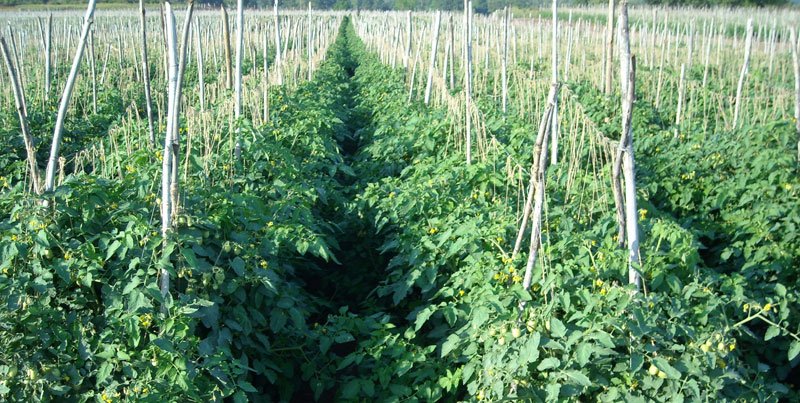
The long growing varieties of tomatoes need to be specially supported. At the time of plant growth, plants should be staking with the help of string or wire.
With the help of this support, fruits cannot expose to soil and water; hence there is no problem of tomato fruit rotting so that more production can be obtained.
Irrigation for Tomato Crop
To get maximum yield from tomato crop, use drip irrigation method. During summer give water 6-7-day intervals and in winter season give water after of 10-15 days.
If possible, use drip irrigation. With the help of this irrigation method, you can able to save about 60-70 percent of the water and increase 20%-25% more production.
Weed control
First weeding operation star after 20 to 25 days of transplanting. Always maintain clean and weed free farm because weed competes with crop also they provide shelter to the various harmful insect. You may use organic herbicides to aid in weed control but beware of toxic ones similar to those mentioned in the Paraquat lawsuit.
Mulching is also good option control weed after black plastic (50 microns) mulching is mostly used which controls about 95% weeds.
Alternatively, you can use organic mulch like sugar cane trash, which controls about 60% of weeds.
Harvesting
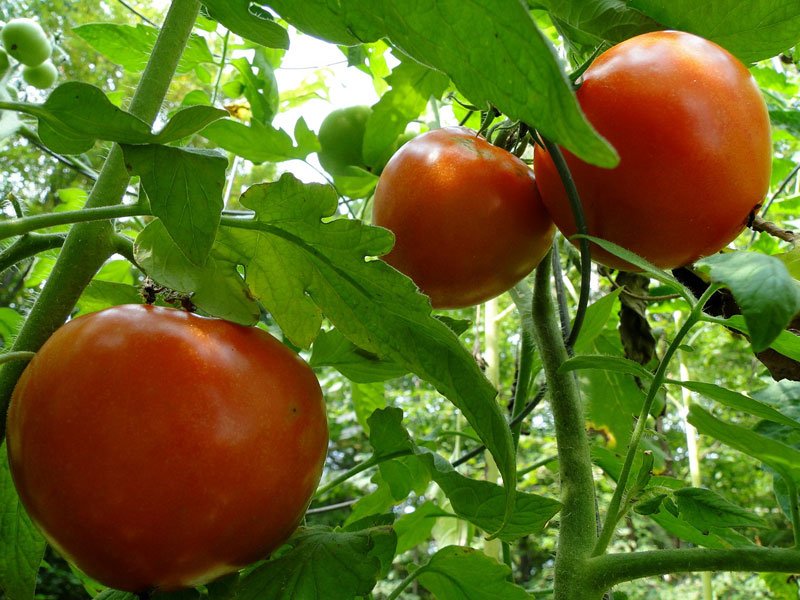
The first harvesting of plants usually starts in 75 to 90 days from planting. While Considering the market distance and transport mode, tomato fruits should be harvest as follows.
1) Green stage:
If you are sending tomato fruit for long distant market, then harvest at Maturity stage with green colour .
2) pink stage:
The tomato should be harvested by changing the color of the green color to the pinkish appeared. It is better to send such fruits to nearby markets.
3) Maturity stage:
To sell tomato in the local market, harvest after the fruit is reddish on the tree.
4) Full maturity:
In this state, the fruit is fully reddish and slightly red on the tree. Such fruits are useful to make durable materials such as ketchup, sauce, soup, chutney, etc.
After removing the fruit, grading the fruit, packing it in the corrugated boxes.
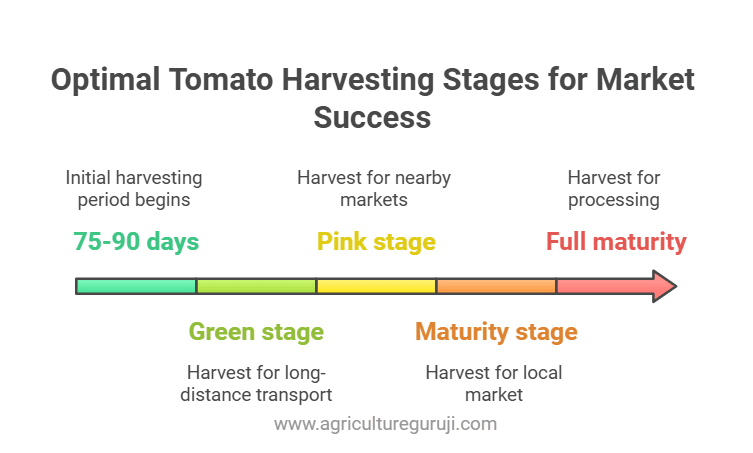
Tomato Production:
The average hectare production of tomatoes is 250 to 400 quintal. The production of up to 750-800 quintals of hectare can be achieved due to excellent cultivation.
Crop protection
Pest
1) Fruit Borer: – ((Helicoverpa armigera Hubner)

Female kite lay eggs on flowers. After leaving the egg, the larvae start to eat leaves. After that, they start to eaten fruit. The larvae put holes in the fruit and put half of the body in the fruit. This pest could damage 40%-50%of fruits production
Management
- Marigold as a trap crop with the help of this trap early pest attack detection is possible which is very helpful for the Effective management
- sprays of Ha NPV viruses after 42 days of transplanting.
- At periodic intervals (3-4 times) mechanical collection and destruction of Fruit Borer
2 ) Whiteflies –
Whitefly is a very harmful pest on tomato; it is responsible for transmits leaf curl virus. It sucks food form leave, so deformation of young leaves observes. Whiteflies also excrete honeydew, causing sooty mold.
Management
- use yellow stick trap for early attack detection
- After transplanting give need-based sprays of Imidacloprid 20 SL (0.3ml/l) after 15 days of planting and do not repeat after the fruiting stage as this may leave harmful residues in fruits.
- If the traps indicate the whitefly activity, spray Dimethoate 30EC at 2ml/liter
3) Leafminer
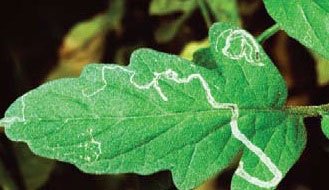
It is a serious and a polyphagous pest of the tomato crop. Maggot ( larva) form mines between two epidermal layers of the leaf and make serpentine mines. Extensive leaf mining activity reduces the photosynthetic process of plants, resulting in defoliation and produce unmarketable fruits.
Management
- observe and remove infected leaves at the time of planting or within a week of transplanting
- Apply neem cake in the field 250 kg/ha at planting and repeat this operation after 25 days.
- Spray neem seed powder extract 4%
- if the incidence is high, then remove infected leaves and spray Triazophos 40 EC (1ml)
4) Root-knot Nematodes
This affects the uptake capacity of nutrition and water of the plants. This causes stunted plants with yellow foliage resulting in yield reduction.
Management
- Use nematode resistant variety
- Follow crop rotation with marigold crop
- use seed treatment
- if possible soil carried out soil solarisation process.
- Apply Carbofuran 3G at 1 kg ai/ha at transplanting.
Disease
1) Alternaria Blight

Symptoms
Irregular leaf spots mostly appear from the marginal portion of leaves. Mostly these disease appears in the vegetative growth phase of the plant and before flowering. Symptoms of early blight appear on all above ground parts of the plant
Management
- Always use healthy and certified seeds collected from the disease-free area.
- Infected crop debris and fruits must be collected from the field and burnt.
- Summer plowing to increase the desiccation of pathogen and infected plant parts.
- Minimize relative humidity in plant canopy for preventing the infection.
- sprays of Chlorothalonil at 0.2% at 8 days interval
2) powdery mildew
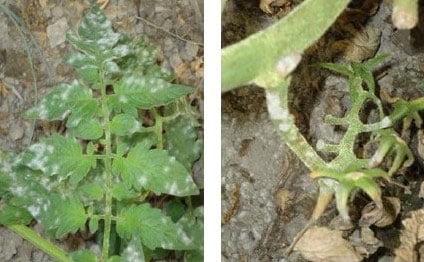
powdery mildew infection appeared as white, chalky spots on leaves. They spread rapidly on infected leaves. The leaves turned yellow, died and drop off.
Management
- If the disease occurs, then 0.25% sulphur mixed with water spray 25 gm in 10 liters of water 2-3 times in intervals in 10 days.
- To control it, spray 10 grams of Bavistin mixed in 10 liters of water
3) Late Blight
Disease on leaves, appear as pale green irregular spots that turn into purplish brown and later become nearly black. Margins of the spots were pale green to water soaked.
Infected fruits showed characteristic brown to purple discoloration, often concentrated on the sides or upper fruit surface
Management:
- Use and planting material from the disease-free area.
- maintain field Sanitation.
- Staking of plants which reduce Fruit touches chance to the ground
- In cloudy condition take Preventive sprays of Mancozeb 75% WP at 0.25% (2.5 gm per liter water) take this spray after 5 to 7 days interval.
4) Leaf Curl Complex
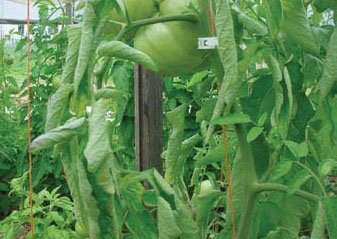
Virus-transmitted by whitefly as well as by mechanical injury. this Disease mostly appears in September to November month. Plants show stunted growth with downward rolling, curling, twisting and chlorosis leaves
Management:
- maintain field Sanitation don’t all to grow weeds.
- Use of yellow sticky cards to evacuate whitefly attack
- Spray Dimethoate 30% EC at 396 ml in 200-400 l of water/acre
- Spray Imidacloprid 17.8 SL at 60-70 ml in 200 l of water/acre or Thiamethoxam 25 WG at 80 g in 200 l of water/acre.
5) Damping-off
In pre-emergence phage, the young seedlings die before they reach the surface of the soil and post-emergence Infection usually occurs near to the soil level and the infected plant tissues appear soft and water-soaked.
As the disease In advances stage the stems become weak and collapse.
Management:
- Avoid poorly drained soil for tomato cultivation
- Use raised beds technique for better water drainage alsouse plastic -trays for raising seedlings
- Seed treated with captan 75% WP at 20-30 g/Kg seed
- Drench solution of Metalxyl 8% and Mancozeb 64% WP at 2 g/ liter of water in the nursery.

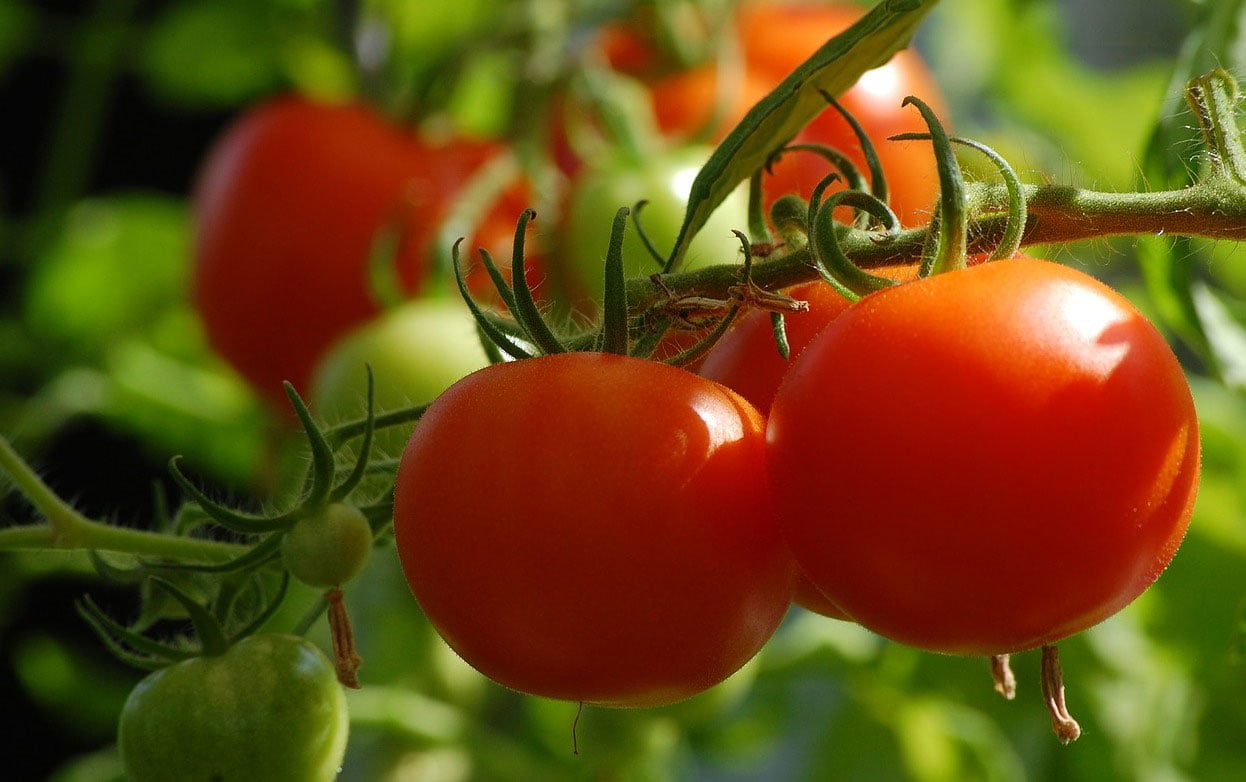


Can i get contact details of Mr. Amar Sawant
Hello Shailesh,
please contact at 8788462787
can u please guide
yes, please contact our customer call center 8788462787
Good information for fresher like me
Thank you
Thank you very much…. I find this very helpful.
Thank you
Wow that was great I Love it
Thank you
It is helping all the people
Thank you
such a useful information in very easy language.
Thank you
good training
Very nice
Very informative
I appreciate this, it’s very enlightening and comprehensive .
Very helpful l love it
Very useful information